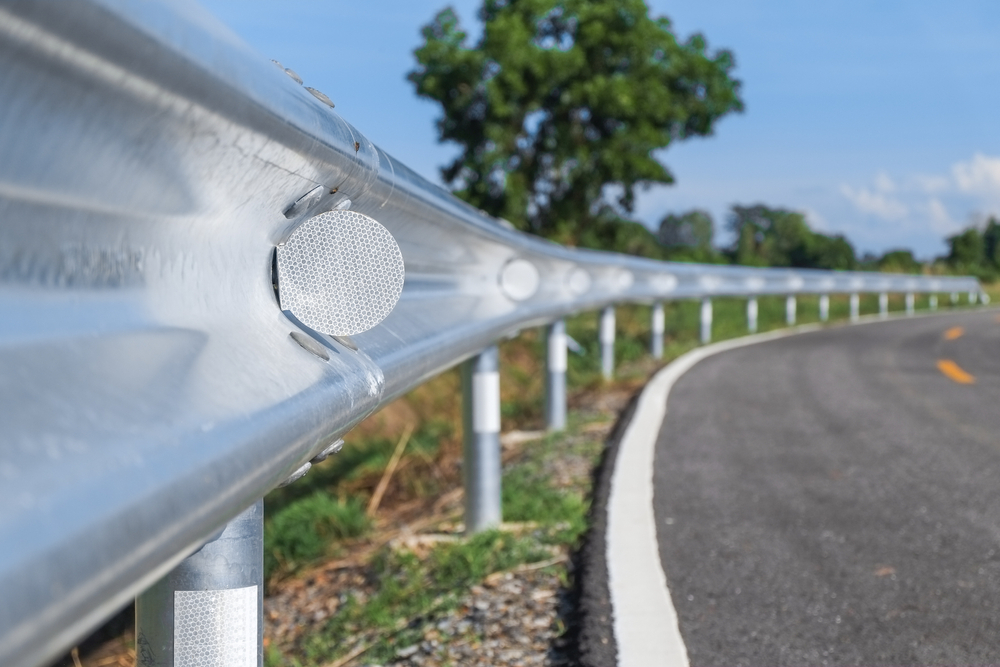Safety Guard Rails: Marrying Safety with Innovation
We see them nearly every day, yet we rarely give a thought on the innovation and design principle that goes into their construction unless we are architects, civil engineers, or design enthusiasts. We’re talking about the humble safety guard rails- an unrated design element that picots around functionality and aesthetics.
Guardrails have been playing a vital role in preserving safety, both in industrial environments and public spaces. They break our falls, direct our paths, and even save our lives. But as our needs and technologies change, it's essential that guard rails don't just provide safety but also aesthetically align with the surrounding environment.
In this blog, we take an insightful journey into the world of safety guard rails, exploring their evolution and the innovative designs shaping their future.
Why Safety Guard Rails Need to Evolve?
Safety guard rails aren't just about safeguarding anymore. With changing urban landscapes and dynamic architectural trends, they need to be versatile and must blend with the design of the building or landscape. Overlooking the design element can lead to a discordant view, a conflict between utility and aesthetics.
While the primary function of safety guard rails is to ensure safety, designers and architects must consider its visual impact. We are in the age where careful attention to minimalistic design and sleek style can transform a guardrail from a safety provision to an architectural element that complements and enhances the structural design.
Moreover, guard rails need to evolve with changing material technology, construction methods, sustainability concerns, and cost-efficiency. Incorporation of different materials like glass, wood, steel, or even recycled materials is becoming more common today.
Innovations in Design: From Function to Aesthetics
The innovation in safety guard rails doesn't just stop with their design, it also extends to the materials used. Glass railings, for instance, are increasingly popular for their clean and contemporary appeal. They are impressively resistant to weather factors, which makes them perfect for both indoor and outdoor spaces.
Steel railings, on the other hand, offer a rugged and industrial aesthetic. Their durability and low maintenance make them a favoured choice for outdoor applications, especially in public spaces. Also, the development of corten steel, with its weathering characteristic, offers an aesthetic appeal that perfectly harmonizes with natural and industrial environments.
Likewise, wood, a traditional material, continues to be a favourite for its natural and warm aesthetic. Now, with hardwoods and treated timber, wood railings can stand the test of time and weather.
Smart and Sustainable: The Future of Safety Guard Rails
With the rise of smart cities and IoT (Internet of Things), future safety guard rails will likely be integrated with technologies for better safety and functionalities. Known as “smart safety guard rails”, they can include features like lighting effects for improved visibility and sensors to alert authorities in case of accidents.
Sustainability, too, is shaping the future design of guard rails. Use of recycled materials, like plastic or metal, is not uncommon. Moreover, incorporation of greenery into railings can help us maintain a touch with nature in increasingly concrete urban spaces.
Customizable Safety Guard Rails: Adapting to Individual Needs
Customizability is a design aspect that cannot be overlooked today. With the wide availability of design tools and technologies, clients are seeking safety guard rails that can be tailored to their specific needs and tastes.
Furthermore, with additive manufacturing or 3D printing methods, it is possible to create safety guard rails in intricate designs and uncommon materials. This opens up a world of possibilities for designing safety guard rails in line with the architecture, landscape, or even in sync with the interior design themes.
Challenges and Considerations
While innovation is exciting, it's important to recognize the challenges it poses. Adapting to new technology or materials can be costly, and not all innovations are practical in all areas. Cultural acceptance, regulatory guidelines and maintenance costs are also valid considerations.
Conclusion
The architectural and design world is continually evolving, and nothing is off-limits, not even the humble safety guard rails. Today, they are more than safety essentials, transforming into vital design elements that integrate safety, aesthetics, and functionality. This evolution is undoubtedly stirring, but like all change, it comes with its set of challenges. But, as we know, challenges are nothing but opportunities in disguise, pushing us to think out of the box, innovate, and create safety guard rails that not only serve their primary purpose but serve as a testament to how even the simplest things around us are imbued with design and innovation.





0 comments
Note: only a member of this blog may post a comment.